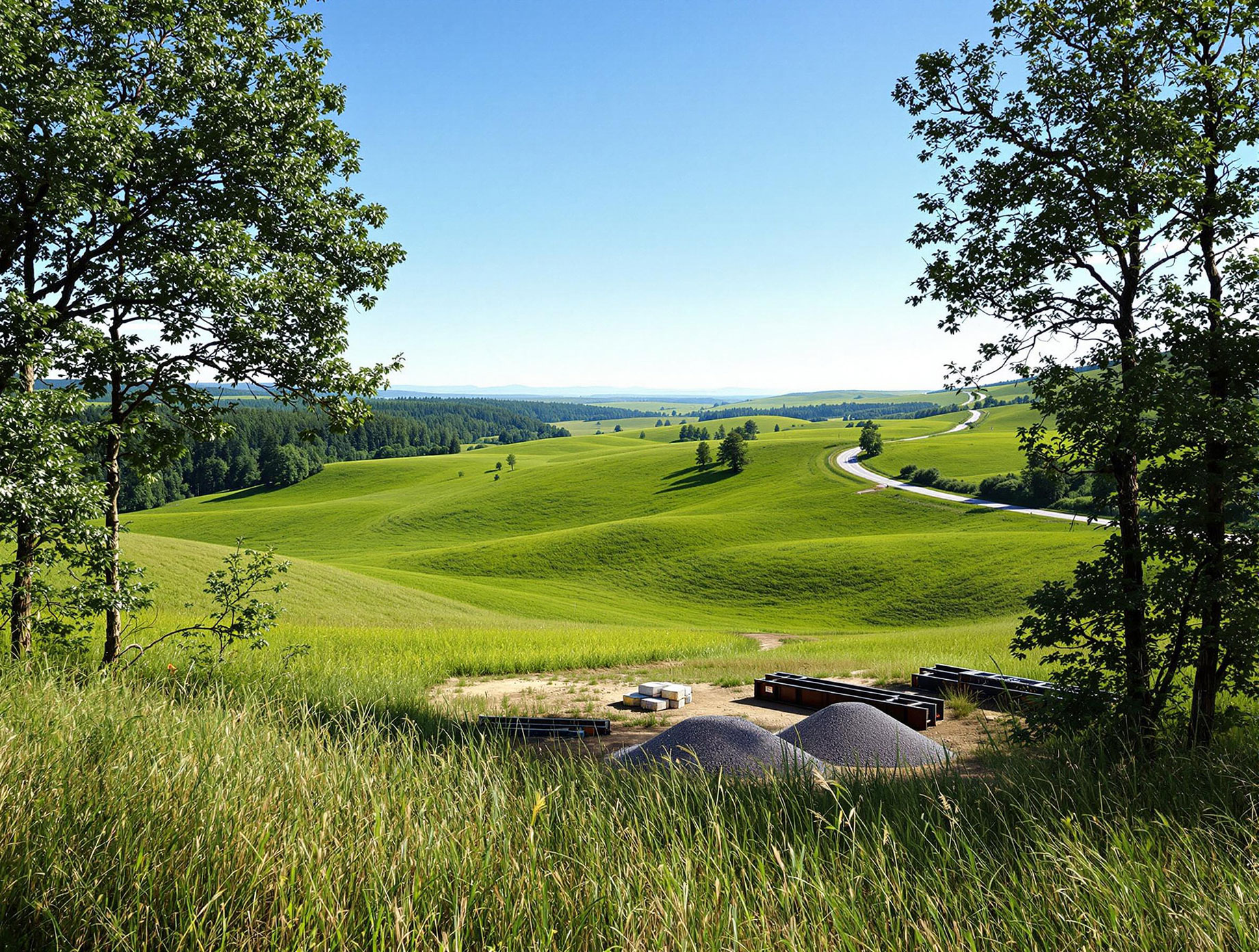
The landscape of American real estate investment is undergoing a profound transformation. As discerning investors pivot from traditional coastal strongholds to emerging markets, a new geography of opportunity unfolds across the heartland. For those with the vision to recognize nascent value, 2025 presents an extraordinary moment to secure parcels that balance immediate affordability with exceptional appreciation potential.
The astute land investor understands that true wealth creation lies not merely in acquisition, but in anticipating the confluence of demographic shifts, infrastructure development, and economic expansion. Today’s overlooked acreage becomes tomorrow’s coveted estate, private retreat, or development cornerstone.
The New American Land Rush: Where Vision Meets Value
Beyond the well-trodden paths of established markets, six states emerge as compelling destinations for strategic land investment. These regions offer more than attractive entry points—they represent the vanguard of America’s evolving economic geography.
Texas: The Enduring Frontier
While metropolitan corridors command premium valuations, Texas’s vast expanses—from the pine-covered hills of East Texas to the dramatic vistas of the Panhandle—present unparalleled opportunities. Here, hundred-acre parcels suitable for private ranches, equestrian estates, or conservation developments remain remarkably accessible. The state’s business-friendly ethos and minimal regulatory constraints create an environment where visionary projects flourish.
Consider the untapped potential of counties like Kerr and Gillespie, where Hill Country charm meets investment pragmatism. These regions offer parcels with panoramic views, natural water features, and proximity to cultured enclaves like Fredericksburg—ideal for developing exclusive residential communities or private vineyard estates.
Tennessee: Southern Sophistication Meets Strategic Growth
Tennessee’s allure extends far beyond its absence of state income tax. The Volunteer State cultivates an ecosystem where property rights reign supreme and development potential abounds. The corridors surrounding Chattanooga and Knoxville witness steady appreciation, while rural parcels in counties like Williamson and Wilson offer entry into markets poised for transformation.
Sophisticated investors recognize Tennessee’s unique position: a state where rolling farmland can transition seamlessly into luxury equestrian properties, where wooded acreage becomes the foundation for exclusive gated communities minutes from thriving urban centers. The state’s commitment to infrastructure enhancement—including expanded highway systems and regional airport modernization—amplifies long-term value propositions.
Arkansas: The Overlooked Gem
Arkansas represents perhaps the most intriguing arbitrage opportunity in today’s market. Long dismissed by coastal investors, the Natural State harbors exceptional value in regions like Benton and Washington counties, where pristine timberland and fertile agricultural parcels await transformation.
The state’s burgeoning manufacturing sector, anchored by major corporate expansions, creates ripple effects throughout surrounding land markets. Visionary investors acquire sprawling properties suitable for private hunting preserves, sustainable timber operations, or future residential developments catering to the influx of executives and skilled workers reshaping Arkansas’s economic landscape.
Alabama: Industrial Renaissance Meets Natural Beauty
Alabama’s northern corridor, particularly surrounding Huntsville’s aerospace and technology hub, exemplifies the new American success story. Here, rural land acquisition offers dual potential: immediate enjoyment as private retreats amid lakes and mountains, with long-term appreciation driven by the state’s manufacturing renaissance.
The convergence of automotive giants, aerospace innovation, and emerging technology sectors creates sustained demand for executive housing and recreational properties. Parcels with water access or mountain views in Madison and Jackson counties represent particularly compelling opportunities for those envisioning lakefront estates or mountain lodges.
Florida: Beyond the Coastline
While coastal Florida commands luxury premiums, the state’s interior counties harbor exceptional value for strategic investors. Marion County’s rolling horse country and Polk County’s lake-studded terrain offer parcels perfect for equestrian estates, citrus groves, or conservation-minded developments.
These inland territories benefit from Florida’s favorable tax structure while avoiding coastal vulnerabilities. Properties with natural springs, mature oak hammocks, or lakefront access provide foundations for creating private compounds that rival coastal estates at fraction of the cost.
Oklahoma: Where Prairie Meets Prosperity
Oklahoma’s transformation from energy dependence to economic diversification creates unique investment dynamics. Rural parcels near Tulsa and Oklahoma City offer accessibility to urban amenities while maintaining the privacy and scale desired by luxury buyers.
The state’s vast grasslands and gentle topography prove ideal for creating expansive ranch properties, wind energy developments, or exclusive residential communities. Counties like Cleveland and Canadian present opportunities to acquire significant acreage at values unimaginable in traditional luxury markets.
The Intelligence Behind Strategic Land Investment
Successful land acquisition transcends simple price-per-acre calculations. The most prescient investors analyze multiple vectors: infrastructure trajectories, demographic migrations, regulatory environments, and economic diversification patterns.
These emerging states share critical characteristics that signal sustained appreciation potential:
- Economic Momentum: Each state demonstrates robust job creation, corporate relocations, and industrial diversification that drive sustained population growth and land demand.
- Regulatory Flexibility: Minimal restrictions on land use enable creative development approaches, from sustainable agriculture to renewable energy projects to luxury residential communities.
- Infrastructure Investment: Ongoing improvements in transportation networks, broadband expansion, and utility access transform previously remote parcels into accessible, developable properties.
- Quality of Life Indicators: These states offer compelling lifestyle advantages—from favorable climates to outdoor recreation opportunities—that attract affluent residents seeking alternatives to congested coastal markets.
Curating Your Land Portfolio: Strategic Selection Criteria
Identifying promising states represents merely the first step. Within these markets, parcel selection demands nuanced evaluation:
- Access and Infrastructure: Prioritize properties with existing road access or feasible connection points. Parcels adjacent to planned infrastructure improvements offer exceptional appreciation potential.
- Topographical Assets: Seek land with natural features—water access, elevation changes, mature timber—that enhance both immediate enjoyment and long-term value.
- Development Flexibility: Verify zoning allowances and deed restrictions align with potential uses, whether creating a private estate, conservation easement, or future development.
- Market Positioning: Analyze surrounding property trajectories, planned developments, and demographic shifts to identify parcels positioned for maximum appreciation.
The Luxury Land Investment Thesis for 2025
This moment in American real estate history presents a rare convergence of affordability and potential. As remote work permanence reshapes residential preferences and climate considerations redirect investment flows, these emerging states offer compelling alternatives to traditional luxury markets.
For the sophisticated investor, land acquisition in these regions represents more than financial strategy—it embodies a vision for creating legacies, whether through conservation, development, or simply preserving magnificent parcels for future generations.
The transformation of raw land into realized vision—be it a private ranch, exclusive development, or conservation landmark—begins with recognizing opportunity where others see only open space. In 2025, that opportunity flourishes across America’s emerging investment frontiers, awaiting those with the foresight to act.
